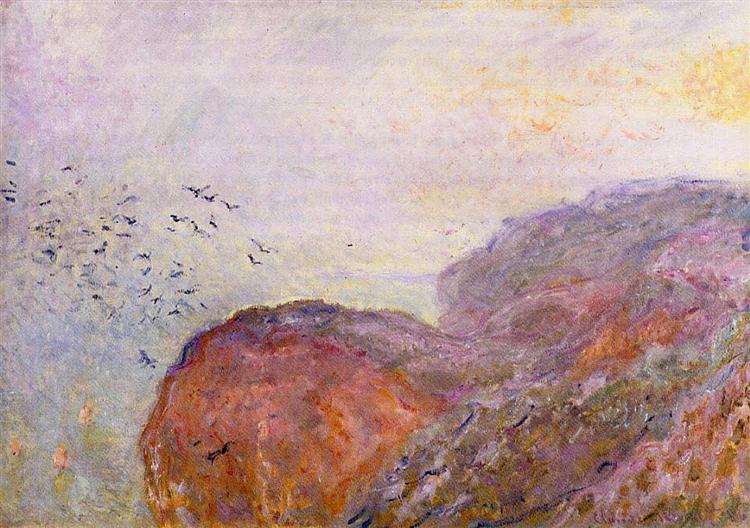Description
Claude Monet's Cliff Near Dieppe (1896) encapsulates the painter's mastery of depicting light and atmosphere. As one of the forerunners of Impressionism, Monet had a distinctive approach to landscape, both in his composition and use of colour, and this painting is a superb example of this.
In the painting, Monet presents a view of the cliffs of the Normandy coast, a place he knew well and which had inspired several artists throughout history. The composition is characterized by the verticality of the cliffs, which dominate the canvas, and the horizon line that appears right at the top of the cliffs. The visual action is framed by perspective, creating a sense of depth that invites the viewer to contemplate the immensity of the landscape.
The use of colour in this work is remarkable. Monet captures the changing hues of natural light: from the greens and beiges of the vegetation growing on the cliffs to the soft blues and greys of the sky and sea. The colours are applied in quick, loose brushstrokes, allowing the light to play across the surface of the water and the cliffs, producing a vibrant effect of movement and vitality. This approach not only portrays the scene, but also conveys the sense of the atmosphere of the coast, as if the fresh air and sea breeze could be felt by the viewer.
Unlike other works of his time, "Cliff near Dieppe" lacks human figures that could distract attention from the landscape and the light phenomenon. This further highlights Monet's mastery in capturing a moment in nature. Without characters, the viewer's attention is focused entirely on the interaction between land, water and sky.
Monet's series of paintings in the Dieppe region are part of his quest to capture weather conditions and light at different times of day. This particular work can be seen in relation to his other series on the Normandy coast, where he explored similar themes of light breaking down and the transformation of familiar landscapes.
As one studies this work, it is pertinent to note how Monet managed to anticipate the forms of modern painting by emphasizing visual effect rather than detailed precision. The work becomes a study in color and form, which sparked interest in the possibilities of perception and interpretation. “Cliff Near Dieppe” is not only a testament to Monet’s virtuosity but also a marker of his evolution as an artist at a time when art was beginning to break free from the shackles of realism. This painting continues to resonate in art history as an example of the sensorial impact that nature can evoke through a canvas.
KUADROS ©, a famous painting on your wall.
Hand-made oil painting reproductions, with the quality of professional artists and the distinctive seal of KUADROS ©.
Painting reproduction service with satisfaction guarantee. If you are not completely satisfied with the replica of your painting, we will refund 100% of your money.

